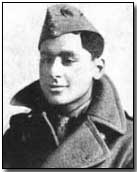Discover Your Roots
SIGN UPDiscover Your Roots
SIGN UPIndra is a male Indian name that exudes power and authority, as it means "Controls The Rain." This name is deeply rooted in Indian culture and mythology, symbolizing the ability to manipulate natural elements. While primarily a masculine name in India and Nepal, it also exists as a feminine name in Latvia. Notable individuals bearing the name Indra include historical figures such as Indra III and Indra IV, ancient Rashtrakutan kings, as well as modern-day personalities like Indra Nooyi, the prominent Indian-American businesswoman. Additionally, fictional characters like Indra Chaudhari in Axiom Verge 2 and Indra, a warrior in the TV series "The 100," bring depth and intrigue to the name's legacy. Embodying strength and influence, Indra is a name steeped in rich cultural significance and historical resonance.

Indra Kumar, also known as Indra Irani, is a prominent Indian film director and producer who has made significant contributions to the Indian film industry. With five Filmfare nominations under his belt, he has also appeared in a number of Gujarati-language films. His recent production, "Thank God" (2022), has further solidified his standing in the industry. Kumar's directorial journey began with the romantic film "Dil" (1990), which marked a successful debut and set the stage for a string of critically and commercially successful films, including "Beta" (1992), "Raja" (1995), and "Ishq" (1997). While he faced some setbacks with average grossers and commercial failures in the following years, Kumar bounced back with successful comedy film sequels such as "Masti" (2004), "Dhamaal" (2007), "Double Dhamaal" (2011), "Grand Masti" (2013), and "Total Dhamaal" (2019). His ability to create commercially successful comedy films has cemented his position as a versatile and accomplished filmmaker. Additionally, he is the brother of actress Aruna Irani and the father of actress Shweta Kumar. Indra Kumar continues to leave a lasting impact on the Indian film industry with his creative vision and successful ventures.

Indra Lal Roy (1898-1918) was the first and only Indian World War I flying ace, known for his remarkable skill and daring. Born in Calcutta to a distinguished family, Roy's aerial victories earned him the title of a flying ace, with a total of ten victories claimed in just over 170 hours of flying time. His family background was steeped in prominence, with his father being a barrister and his maternal grandfather being one of the first Indian doctors to be trained in Western medicine.Initially rejected by the Royal Flying Corps due to poor eyesight, Roy sought a second opinion and eventually joined the RFC at the age of 18. His achievements in the war led to him being posthumously awarded the Distinguished Flying Cross, making him the first Indian to receive this honor. In 1998, a commemorative stamp was issued in his honor to mark the 100th anniversary of his birth.Indra Lal Roy's legacy remains unparalleled, as he continues to be the only Indian flying ace fighter pilot to this day. His courage and determination in the face of adversity during the war have left an indelible mark in history.

Indra Malla, also known as इन्द्र मल्ल, was a prominent figure in the Malla dynasty and served as the King of Patan. Following the reign of Loka Prakash Malla, he ascended to the throne in 1706 and ruled until his passing in 1709. Indra Malla's lineage can be traced back to Srinivasa Malla, and he was the nephew of Yoganarendra Malla through his sister Manimati. He assumed the role of king after the untimely death of Lokaprakash Malla, who succumbed to smallpox after a brief 11-month rule.Known for his devoutness, Indra Malla demonstrated his religious fervor by making significant donations to various religious institutions during his reign. Upon his demise, Vira Narasimha Malla succeeded him as the ruler of Patan. Indra Malla's legacy is intricately woven into the history of the Malla dynasty, leaving a mark as a religious monarch who left a lasting impact on the religious landscape of his time.References:- Add references if needed


All images displayed on this page are sourced from Wikipedia or Wikimedia Commons.We use these images under their respective Creative Commons or public domain licenses. Wherever applicable, author attributions and license information are provided. If you believe an image is used incorrectly or outside its license terms, please contact us so that we can review and correct the issue.